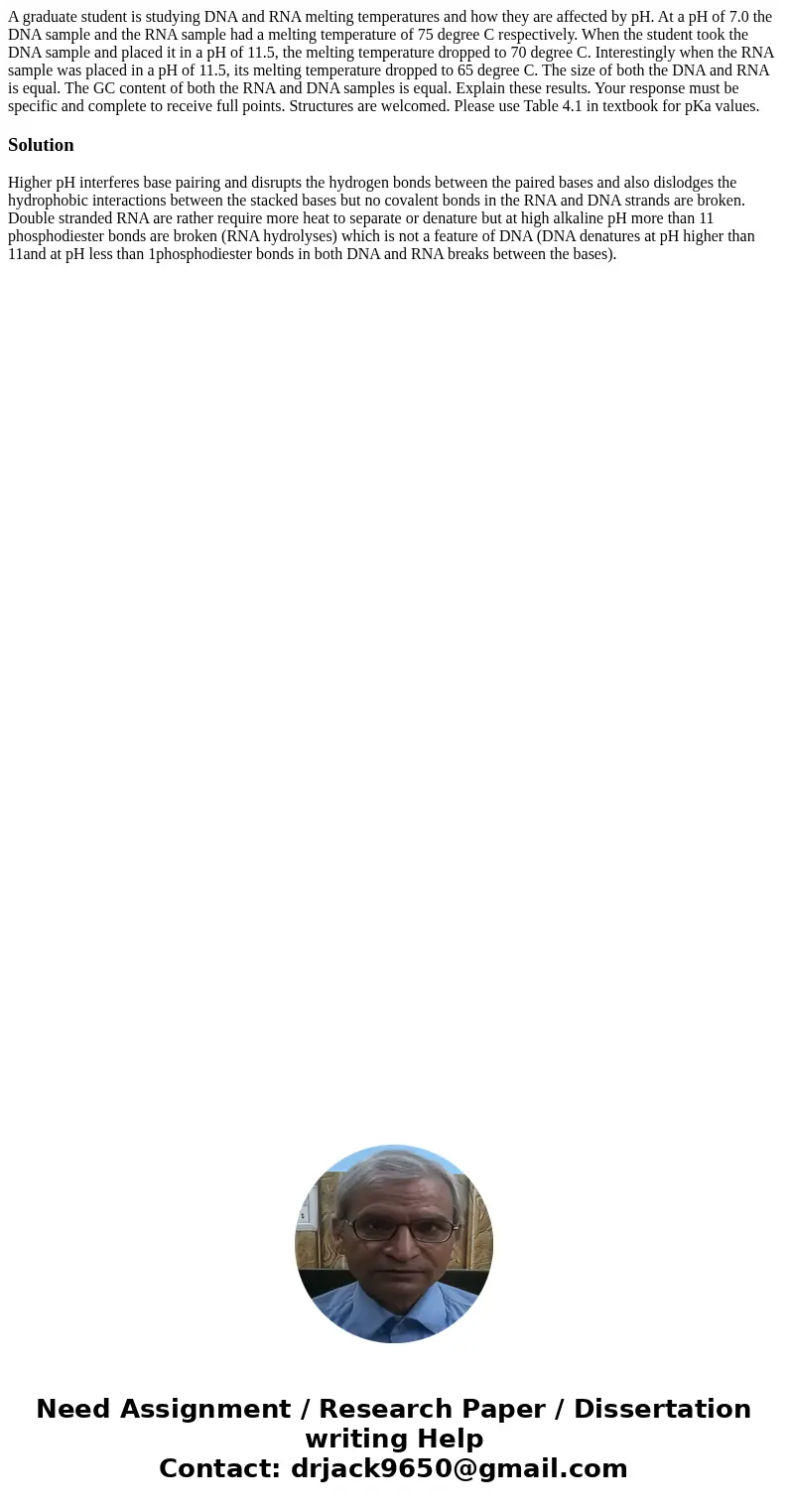A graduate student is studying DNA and RNA melting temperatu
A graduate student is studying DNA and RNA melting temperatures and how they are affected by pH. At a pH of 7.0 the DNA sample and the RNA sample had a melting temperature of 75 degree C respectively. When the student took the DNA sample and placed it in a pH of 11.5, the melting temperature dropped to 70 degree C. Interestingly when the RNA sample was placed in a pH of 11.5, its melting temperature dropped to 65 degree C. The size of both the DNA and RNA is equal. The GC content of both the RNA and DNA samples is equal. Explain these results. Your response must be specific and complete to receive full points. Structures are welcomed. Please use Table 4.1 in textbook for pKa values.
Solution
Higher pH interferes base pairing and disrupts the hydrogen bonds between the paired bases and also dislodges the hydrophobic interactions between the stacked bases but no covalent bonds in the RNA and DNA strands are broken. Double stranded RNA are rather require more heat to separate or denature but at high alkaline pH more than 11 phosphodiester bonds are broken (RNA hydrolyses) which is not a feature of DNA (DNA denatures at pH higher than 11and at pH less than 1phosphodiester bonds in both DNA and RNA breaks between the bases).

 Homework Sourse
Homework Sourse